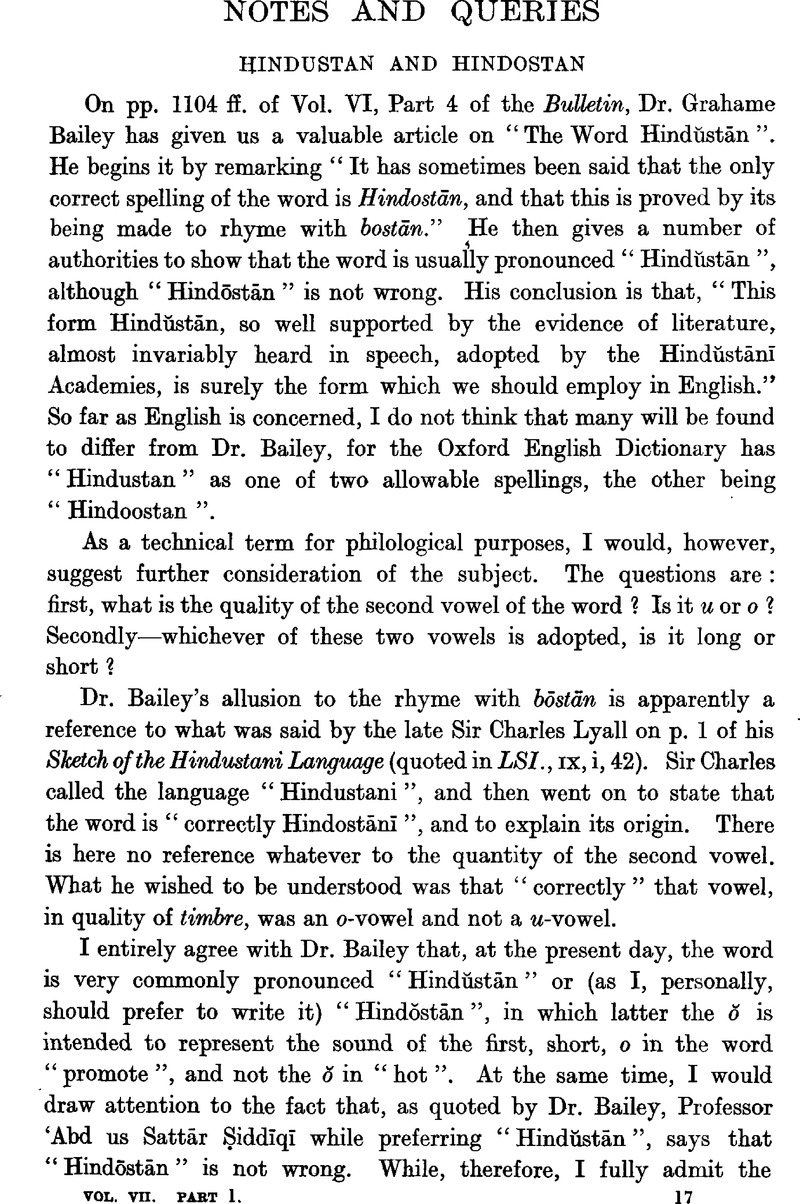No CrossRef data available.
Published online by Cambridge University Press: 24 December 2009

page 258 note 1 See, e.g., Blochmann, in JASB. xxxvii, i, p. 35.Google Scholar
page 259 note 1 Let me repeat that by ô I here indicate the short sound of ō, approximating the sound of the first o in “promote”. It does not here indicate the sound of the ô in “hot”.
page 260 note 1 If we are to abandon the istê'māl in this word, we must also abandon it in such words as gōsht, flesh, and shēr, a tiger. The former would then become the Persian gūsht, and the latter would not only become the Persian shīr, but would also mean “a lion”, and not “a tiger”. In discussing Indian languages, I think we may fairly quote Horace, and say, “Persicos odi apparatus” and “simplici myrto nihil adlabores sedulus, cura”.